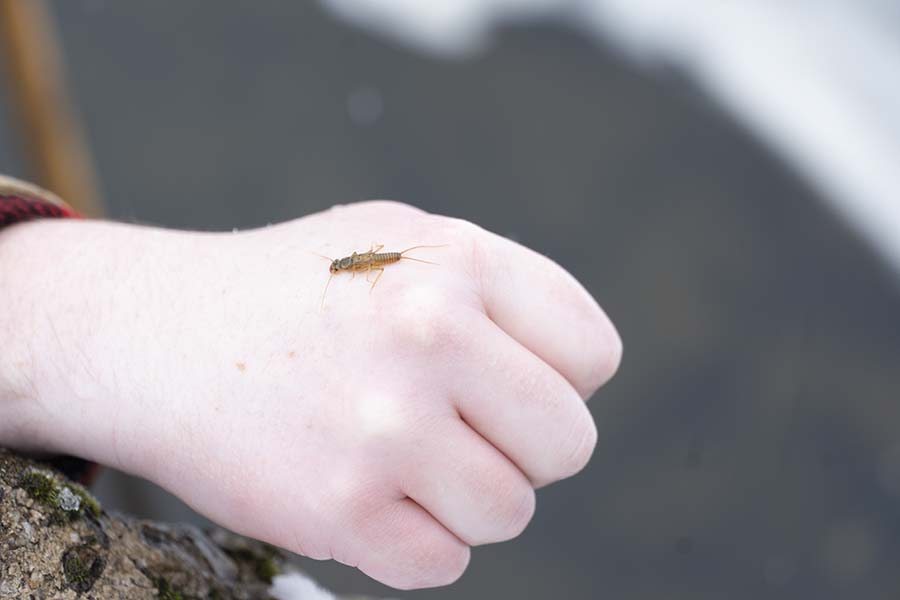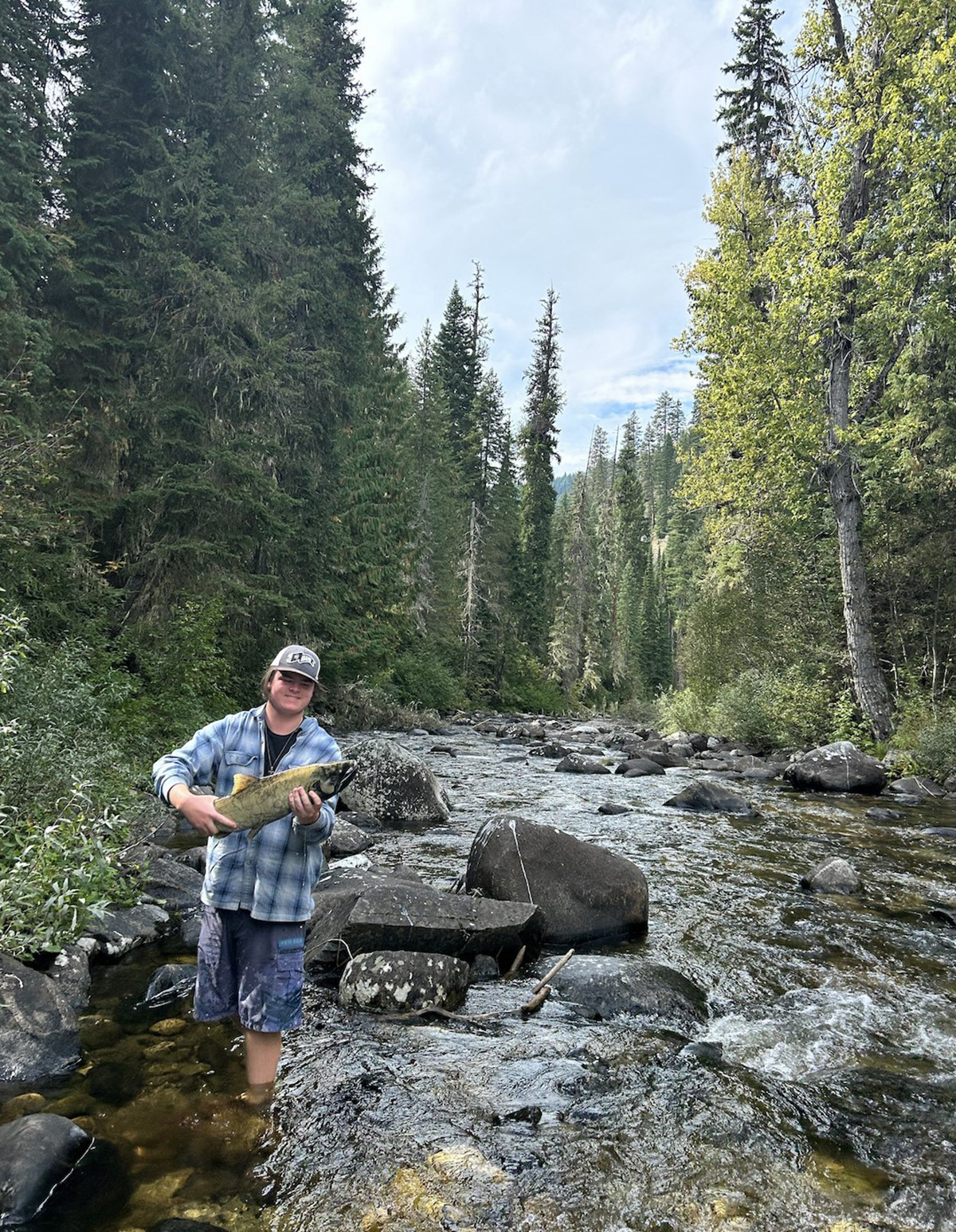Angler ties aquatic bugs to water quality
INBRE scholar investigates insects as indicators of healthy waterways
Article by Ralph Bartholdt, University Communications
Photos by Melissa Hartley, University Visual Productions
Jack Stafford stood knee-deep in the gurgling Gibbon River in Yellowstone National Park as water dripped from the grayling he had caught on a fly.
“I was standing there in this beautiful river holding this rare and beautiful fish with the sun shining on the hills and meadows and I thought, ‘This is pretty great’,” he said.
Stafford, an undergraduate fisheries management student from Harrison decided then that a career in fisheries biology may be worth pursuing.
While studying at University of Idaho’s College of Natural Resources, Stafford secured a grant from INBRE — the Idea Network of Biomedical Research Excellence. The group’s purpose includes funding projects that promote public health.
Stafford’s U of I curriculum and research are outdoor focused, and not usually associated with white lights and lab coats, but the INBRE grant will help pay for his work on two research projects in Chris Caudill’s lab in the College of Natural Resources.

One of the studies includes identifying aquatic insects that are an indicator species of healthy rivers. That means the bugs’ presence indicates the water is clean and healthy. If the bug isn’t there, it could suggest stream quality problems.
“If these insects are found in rivers and streams, it shows the water is good quality, and their absence can mean there’s a problem like a type of pollution that may also affect communities and people living alongside the river,” Stafford said.
Other environmental factors with broader implications on water quality and human health may also affect species abundance.
“Our work on invertebrates is aimed at understanding how invertebrate diversity in streams changes within watersheds and how species will respond to environmental change because invertebrates are critical to supporting trout and salmon in Idaho streams,” Caudill, an associate professor of fisheries, said.
The study includes refining how elevation changes influence aquatic insect populations and species and using the data as baseline information for climate change monitoring, he said.
Stafford’s second study explores the distribution of two rare species of stonefly — called snowflies — found only in Latah County. These insects emerge during winter and mate on the snow.
The project aims to map the two species’ distribution, with a key focus on developing molecular tools to significantly enhance the ability to detect the stoneflies in a wider area.
Molecular tools include identifying specific genetic markers, DNA “barcodes” that could help detect stonefly species from environmental samples like water or sediment.
“The broad goal is to better define the habitat and distribution of the species so conservation guidelines can be developed,” Caudill said.
Christopher Caudill, Ph.D.
Professor of Fisheries
If these insects are found in rivers and streams, it shows the water is good quality. Jack Stafford. Fisheries major

The work on snowflies is done in collaboration with Idaho Fish and Game and U of I’s Barr Entomological Museum.
Stafford said his interest in biology and fisheries developed gradually from a natural curiosity about aquatic ecosystems while living along Lake Coeur d’Alene and spending free time popping lures into the water.
“Fishing was just something we did as a family and I learned to fish early on,” he said.
His mother, a former bass tournament angler with a few wins under her belt, encouraged Stafford to start angling. But his primary influence was two Lake City High School teachers. During a summer field trip to Yellowstone National Park, they inspired Stafford to survey grayling in the Gibbon River.
The outdoor science project motivated him to enter the biology field, and because he was already an angler, fisheries seemed a worthwhile pursuit.
“Jack has been an enthusiastic student of freshwater ecology and dedicated in the lab and field,” Caudill said. “His love of fishing blurs with his interest in freshwater ecology and fish biology — he is as likely to share a story about trying to find a remnant population of redband trout in a tiny stream as he is to share pictures of big fish.”
Published in March 2025.









